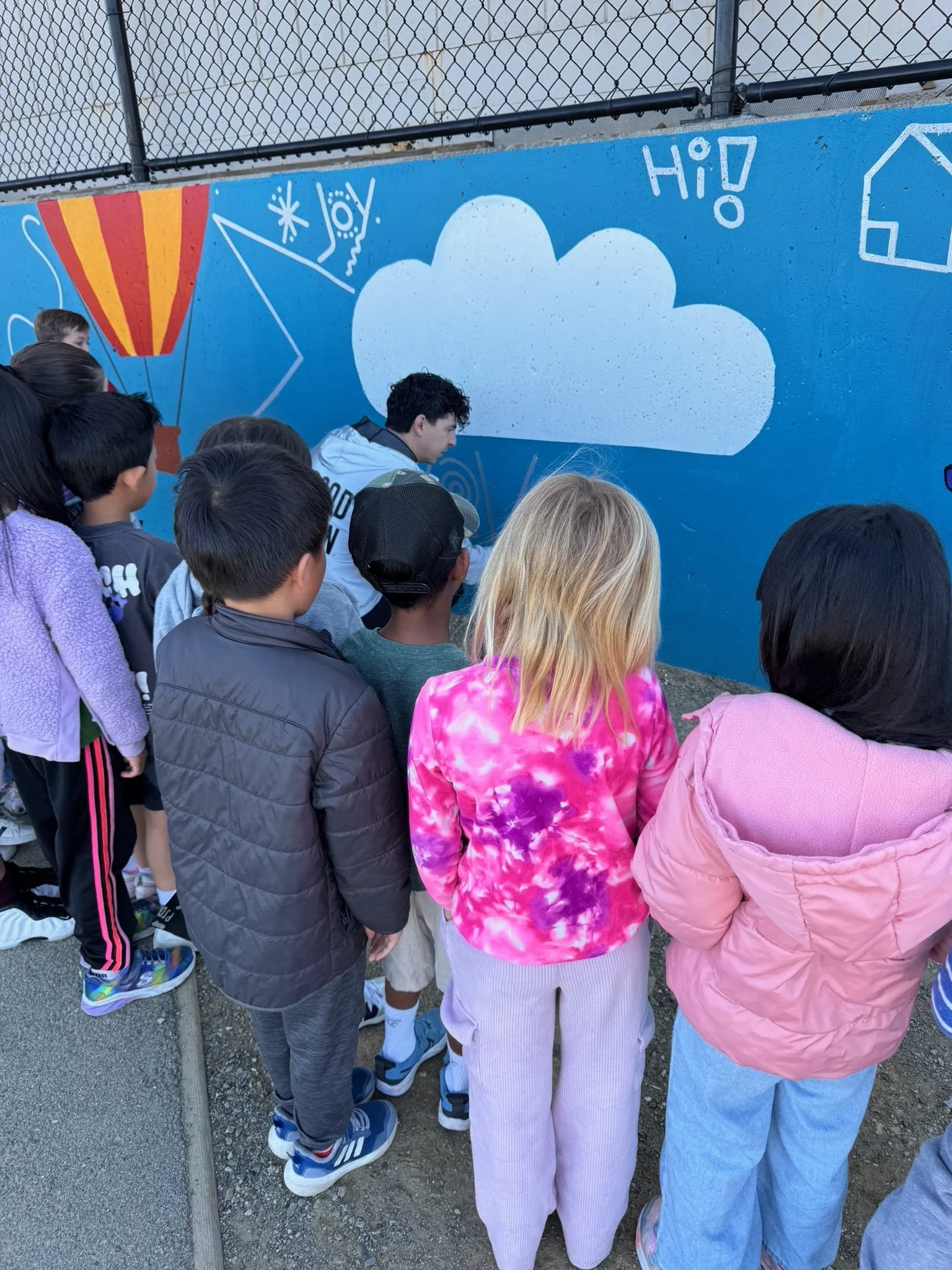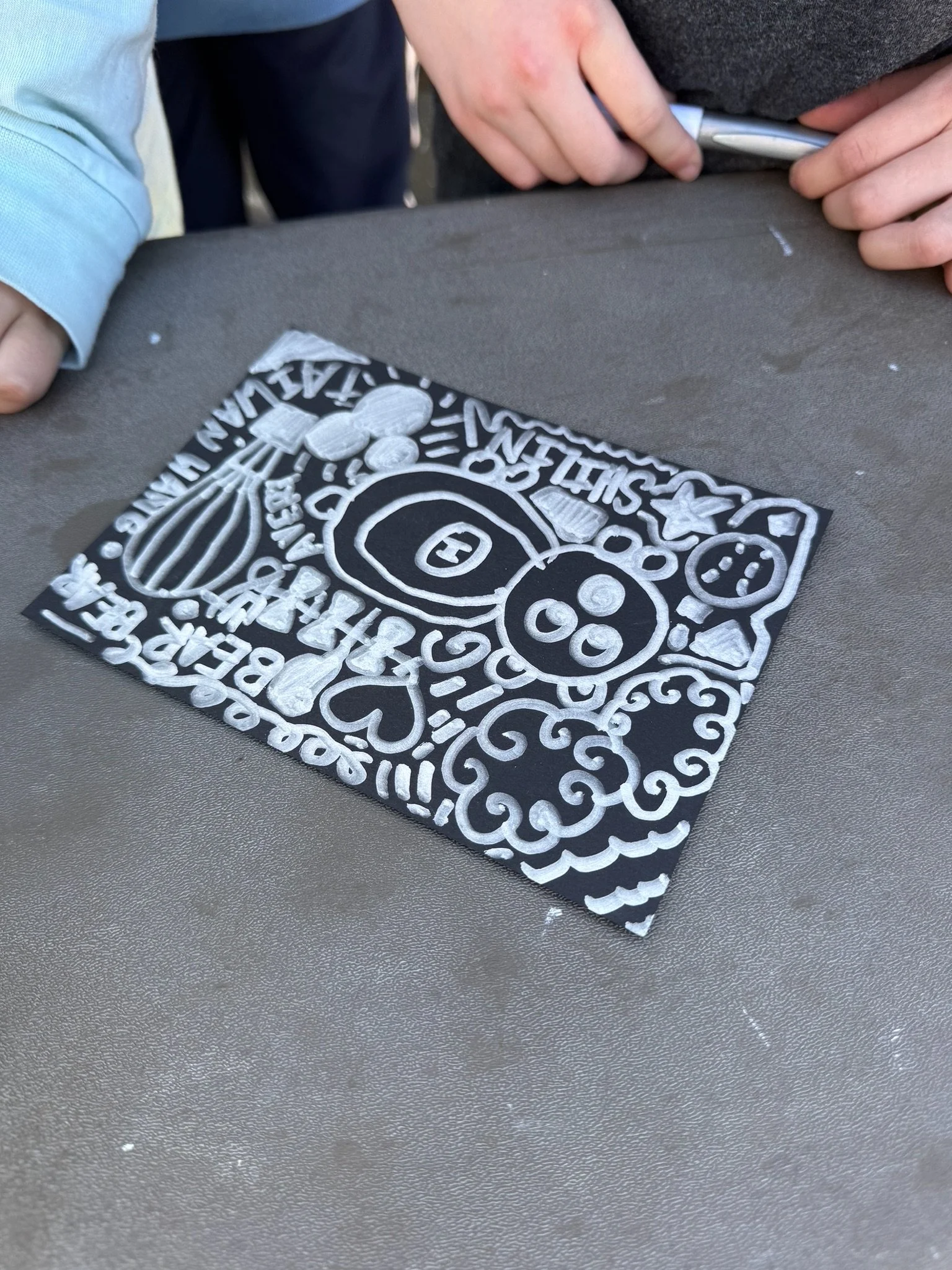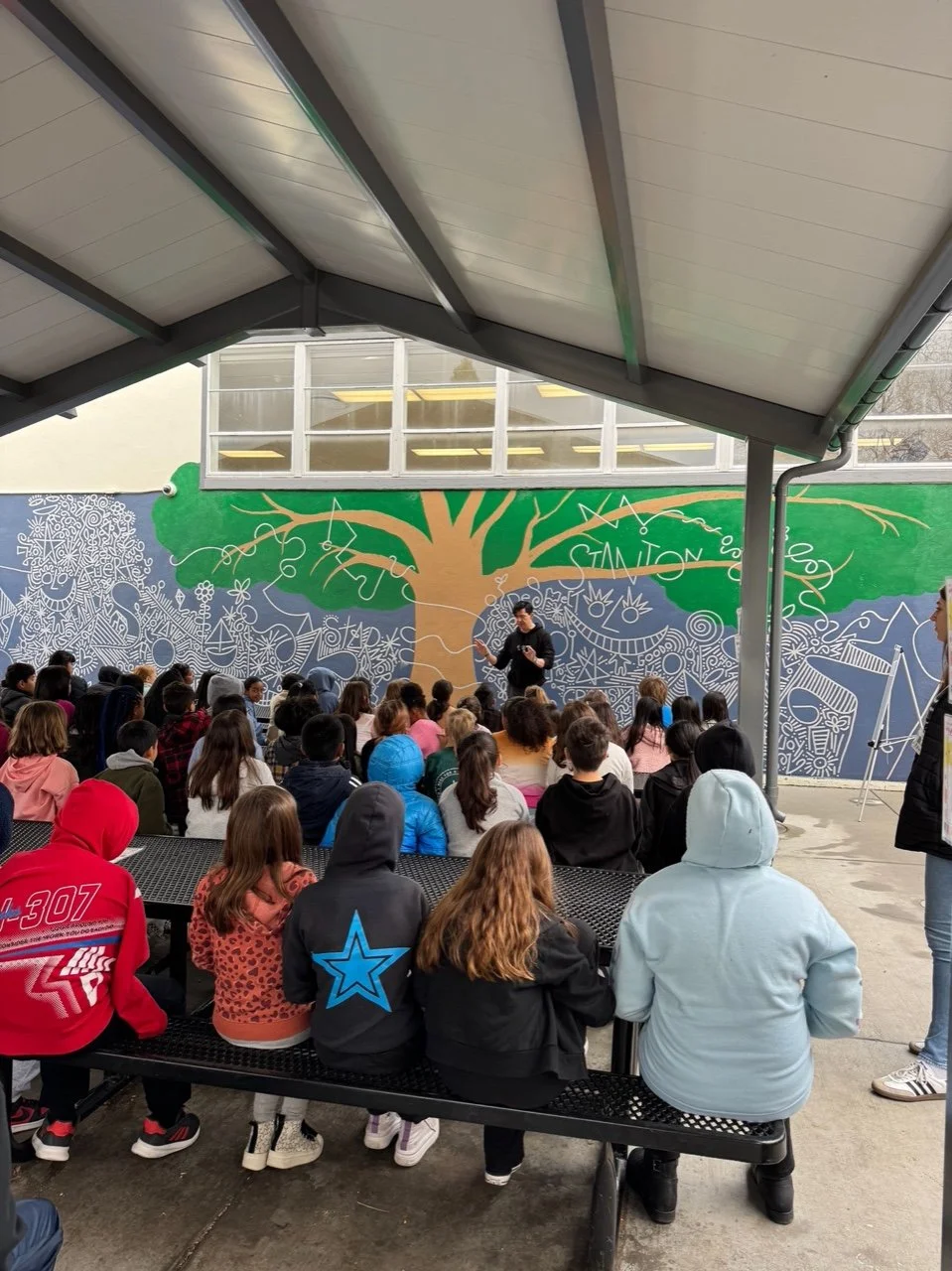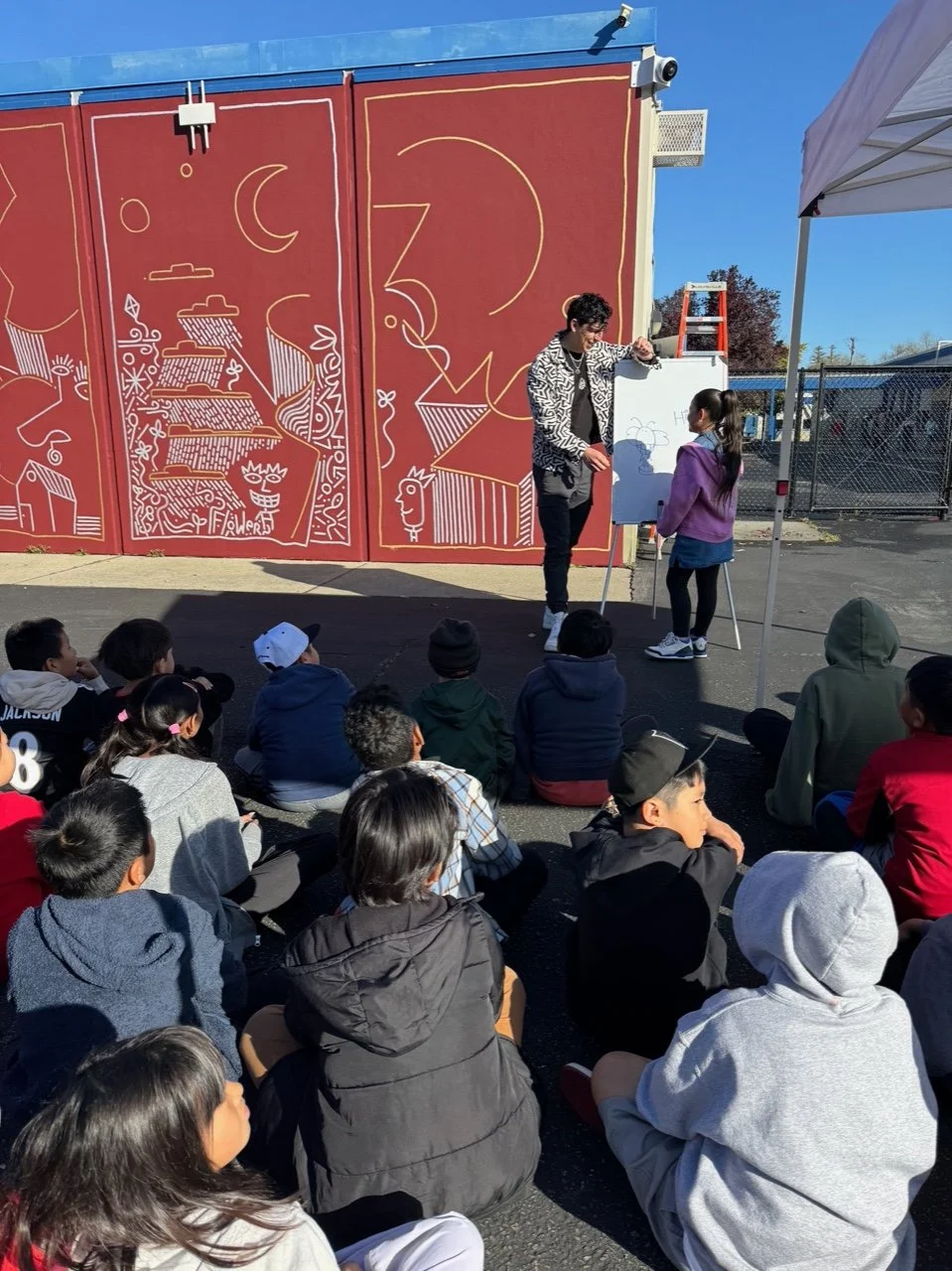Artist Profile: Charlo
Can you start by telling us a little about yourself and your artistic background?
I’m originally from Monterrey, Mexico, and I moved to the U.S. in 2013. My entire family—my mom, dad, sisters, nephews, and niece—still live in Mexico. I became an American citizen in 2024 and now live in Denver with my husband Adam and our cat, Apollo.
I’ve always been curious and drawn to the joy that comes from unexpected discoveries, and that sense of exploration really defines my work. I create visual compositions that use the line as a thread—interweaving symbols, shapes, and words to create spaces for reflection and discovery.
Even though I’ve always been an artist at heart, I was afraid to pursue it growing up. It wasn’t until the pandemic, during COVID, that I decided to face that fear and do something about it. That decision led to the creation of my Make Alleys Great Again project. From there, things grew—I started making murals across different cities and haven't stopped since. I talked about this project more on my TedX Talk from a couple years ago.
How did you first get involved with the Inspired Students Mural Initiative?
I co-founded the Inspired Students Mural Initiative with Mark Pinsukanjana (please make Mark’s name a link to his bio in the Saffron site). Mark and I met a few years ago through Themes + Projects, when I had an exhibition at his gallery. As we got to know each other, the idea of doing a mural at a school came up.
Catherine, the principal at Rancho Elementary (and a friend of Mark’s), thought it would be a great idea to bring the project to her school. A few months later—without a clear roadmap or knowing what would come of it—we just decided to go for it. That first mural sparked something. It created a chain reaction, and in just over a year, we’ve painted murals at more than 12 schools and reached over 6,000 students.
What drew you to the project? Was there something about the mural’s theme or purpose that resonated with you?
From the start, it was the potential to connect with students that drew me in. I grew up not knowing any artists or even believing it was possible to be one. So the idea of being the person who shows up at a school and says, “Yes, this is possible,” really moved me. There’s something deeply meaningful about helping students understand that their dreams are valid—and that creativity can be a powerful part of their lives.
Can you describe a moment during the process—whether planning, painting, or collaborating—that felt especially meaningful? Do you come to the murals with something in mind or is it all intuition?
One moment I’ll never forget happened during our very first mural at Rancho Elementary. After we finished the mural on the main wall, something spontaneous happened. The kids were playing outside after school, and I saw a blank wall ball. I suggested we paint that too—no plan, just a moment of inspiration. I started painting, and before I knew it, all the students from the after-school program had gathered around, giving me words and ideas to include. That spontaneous collaboration turned into a second mural, and the energy was incredible. It was joyful, unexpected, and full of connection.
That moment kind of defines the process for me. I never come to a mural with a strict plan—just a general idea, maybe a color palette. Most of what happens is intuitive. Ideas flow as I work, often inspired by the students themselves. Their words, their energy, their questions—it all makes its way into the wall. It becomes a truly collaborative process.
How has being part of this initiative influenced your growth as an artist or as a person?
This initiative has taught me so much. I’ve learned how much I love teaching and sharing my process with students. I didn’t expect that part of it to mean so much to me. There’s a different kind of reward in inspiring others, especially young people who are just starting to see the world through a creative lens. It’s made me more patient, more grounded, and more aware of the responsibility that comes with being an artist in a public, educational space.
The mural is not just art—it’s a form of storytelling and visibility. What story do you feel you helped tell through this project? How do you think being part of this will impact the children whose schools have participated?
As a kid, I always wanted to be an artist, but it felt impossible. I never had a role model or anyone to show me it could be real. Through this project, I hope I’m helping tell a different story for these students—one that says not only is it okay to want to be an artist, it’s possible. That visibility matters so much. When kids see someone who looks like them, who maybe speaks like them, doing this work, something clicks. They believe a little more. And that belief can change a life.
What’s one thing you learned—about community, creativity, or even yourself—that you’ll carry forward?
I’ve learned that creativity thrives in community. These murals are proof that when people come together, when we listen to each other and create something side by side, the impact multiplies. I’ve also learned to trust the process more—to let go of perfection and just be present. There’s beauty in the unknown, and so much magic in letting things unfold. I’ll carry that with me always.
To find out more about what the Mural Initiative is doing? Follow along and stay connected:
Website: muralinitiative.org
Instagram: @mural_initiative | @charlo.gw
Contact: hello@muralinitiative.org
Attached is the 2024–2025 Impact Report to share the scope of what we’ve accomplished—and where we’re heading next. We’re planning to do 20 more schools next year, including our first out-of-state mural in Denver! The momentum is real.
If you’d like to follow Charlo please see Life Lines No. 9 by Charlo on Substack.








